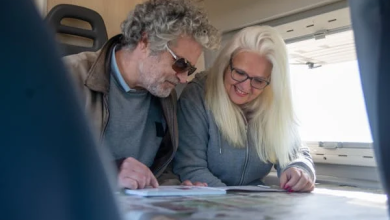How To Optimize Parking Spaces in Commercial Areas

With the increase in the commercialization of cities, the need for viable parking solutions has never been more sought after than it is now.
Full parking lots, long queues, and vast areas with no or little utilization of space can deter a customer and can put pressure on employees. Well, it is not very professional to have a business like that! Hence, through the application of new concepts and state-of-the-art tools, parking lots can be arranged to facilitate access to secure zones.
This article discusses several ways various commercial zones may improve parking lot space.
- Optimizing Airport Parking
Car parks are some of the busiest places as they are accessed by a wide variety of customers ranging from transient airport users to those who use the airport car parks for the entire day. Accommodation can be a hindrance when one has to park a vehicle since the parking space is often taken.
To further improve parking efficiency, smart parking with technologies such as sensors and cameras to inform users of real-time parking space availability should be implemented at airports. Also, valet parking has to be promoted, whereby the operator parks your car for you. These systems assist in managing the traffic and particularly the parking of these vehicles in a professional and orderly manner, thereby reducing traffic.
For instance, Melbourne Airport Parking has embraced shuttle services and valet parking for outer car parks, which boosts the city’s parking.
- Maximizing Retail and Shopping Mall Parking
Parking requirements are high during shopping seasons, and players in the retail and shopping malls feel this.
To mitigate this, dynamic parking prices can be employed; parking charges fluctuate depending on the availability of parking spaces.
Another measure is to make joint parking arrangements with other commercial entities with varying customer traffic densities at different times of the day.
Using parking sensors with LED displays can also help drivers find empty spaces and assist in reducing traffic.
- Enhancing Office Building Parking
Business premises need to address the issue of parking during business activities since many people employ the use of their cars when going to work.
Certain privileges like special parking spaces for carpool vehicles or lower parking fees can limit the number of cars seeking parking space.
The best approach is to have policies that allow them to adjust the number of car spaces to meet the demand at a given period.
For instance, increase the number of visitors to car spaces during a busy period to enhance space utilization.
Off-site parking lots, especially those with shuttle services, also contribute to the availability of parking spaces.
- Optimizing Parking for Residential and Mixed-Use Developments
Mixed-use developments use the buildings for residential, business, and leisure purposes. Traffic demands in this situation can be complicated. That is where multifunctional parking facilities are effective. Organizing parking for cars with shops on the first level and residential floors on the second level can solve the problem of congested parking places.
Adopting this parking management guarantees that the space is reserved for residents during the evening and for the general public and shopkeepers during the day.
This creates an organized parking system that ensures smooth parking and judicious use of the parking space.
- Leveraging Technology in Parking Management
Modern vision of parking optimization cannot be considered without technology. Smart sensors in IoT help track the occupancy of the space in real-time, which helps the management system improve the parking system.
Online real-time availability, parking reservations, and payment applications can be made available on mobile, which can be favorable for users.
You can quickly look for an empty space in the parking lot without even visiting the place, cutting down on congestion.
Moreover, by incorporating automatic billing services using technology, parking spaces can minimize the time spent on parking bills and have a smooth flow of traffic.
- Implementing Sustainable Parking Solutions
The need to incorporate sustainability considerations in optimizing parking has become essential nowadays. Through the installation of green parking substitutes such as electric car charging points, the use of electric cars is promoted, reducing carbon footprints.
The number of parking places can be reduced if bicycle parking and car rental options are popularized. Another solution would be to incorporate green roofs into parking structures and to pave with porous materials where possible.
Such measures make the commercial places attractive to green-conscious clients and stakeholders when adopted.
This is because they make optimum space utilization and are compatible with even broader ecological initiatives.
- Enhancing User Experience in Parking Facilities
In the planning and operation of parking facilities, user experience is crucial. All users’ convenience and safety are guaranteed by clear signs, sufficient illumination, and secure pedestrian walkways.
Implementing features such as charging stations for electric vehicles, special parking for families with small children, and accessible places for those with impairments meets various demands.
Additional features that improve the user experience are covered pathways, clean toilets, and vending machines.
Commercial spaces may make a good impression and entice repeat business by emphasizing user-friendly features and architecture.
Conclusion
To maximize parking spots in business settings, advanced technology, creative thinking, and environmentally friendly methods must all be used.
Considering the requirements of various commercial locations may significantly improve the efficiency and user experience of parking. Using the above-mentioned strategies, commercial spaces can make parking less hassle and more seamless.




